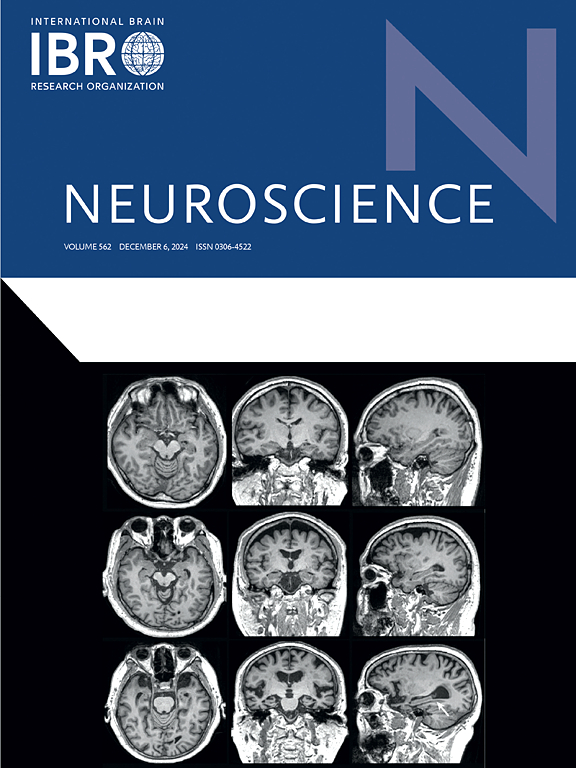BrainTract: segmentation of white matter fiber tractography and analysis of structural connectivity using hybrid convolutional neural network
IF 2.9
3区 医学
Q2 NEUROSCIENCES
引用次数: 0
Abstract
Tractography uses diffusion Magnetic Resonance Imaging (dMRI) to noninvasively reconstruct brain white matter (WM) tracts, with Convolutional Neural Network (CNNs) like U-Net significantly advancing accuracy in medical image segmentation. This work proposes a metaheuristic optimization algorithm-based CNN architecture. This architecture combines the Inception-ResNet-V2 module and the densely connecting convolutional module (DI) into the Spatial Attention U-Net (SAU-Net) architecture for segmenting WM fiber tracts and analyzing the brain’s structural connectivity. The proposed network model (DISAU-Net) consists of the following parts are; First, the Inception-ResNet-V2 block is used to replace the standard convolutional layers and expand the network’s width; Second, the Dense-Inception block is used to extract features and deepen the network without the need for any additional parameters; Third, the down-sampling block is used to speed up training by decreasing the size of feature maps, and the up-sampling block is used to increase the maps’ resolution. In addition, the parameter existing in the classifiers is randomly selected with the Gray Wolf Optimization (GWO) technique to boost the performance of the CNN architecture. We validated our method by segmenting WM tracts on dMRI scans of 280 subjects from the human connectome project (HCP) database. The proposed method is far more efficient than current methods. It offers unprecedented quantitative evaluation with high tract segmentation consistency, achieving accuracy of 97.10%, dice score of 96.88%, recall 95.74%, f1-score 94.79% for fiber tracts. The results showed that the proposed method is a potential approach for segmenting WM fiber tracts and analyzing the brain’s structural connectivity.

脑道:脑白质纤维束分割及混合卷积神经网络结构连通性分析。
神经束造影(Tractography)利用弥散性磁共振成像(diffusion Magnetic Resonance Imaging, dMRI)无创重建脑白质束(WM),而像U-Net这样的卷积神经网络(Convolutional Neural Network, cnn)则显著提高了医学图像分割的准确性。本文提出了一种基于元启发式优化算法的CNN架构。该架构将Inception-ResNet-V2模块和密集连接的卷积模块(DI)结合到空间注意U-Net (au - net)架构中,用于分割WM纤维束并分析大脑的结构连通性。提出的网络模型(DISAU-Net)由以下部分组成;首先,使用Inception-ResNet-V2块替换标准卷积层,扩展网络宽度;其次,在不需要任何额外参数的情况下,使用Dense-Inception块提取特征并加深网络;第三,使用下采样块通过减小特征图的大小来加快训练速度,使用上采样块提高特征图的分辨率。此外,使用灰狼优化(GWO)技术随机选择分类器中存在的参数,以提高CNN架构的性能。我们通过对来自人类连接组项目(HCP)数据库的280名受试者的dMRI扫描进行WM束分割来验证我们的方法。所提出的方法比现有的方法效率高得多。它提供了前所未有的定量评价,纤维束分割一致性高,准确率为97.10%,dice评分为96.88%,召回率为95.74%,f1评分为94.79%。结果表明,该方法是一种有潜力的WM纤维束分割和大脑结构连通性分析方法。
本文章由计算机程序翻译,如有差异,请以英文原文为准。
求助全文
约1分钟内获得全文
求助全文
来源期刊

Neuroscience
医学-神经科学
CiteScore
6.20
自引率
0.00%
发文量
394
审稿时长
52 days
期刊介绍:
Neuroscience publishes papers describing the results of original research on any aspect of the scientific study of the nervous system. Any paper, however short, will be considered for publication provided that it reports significant, new and carefully confirmed findings with full experimental details.
 求助内容:
求助内容: 应助结果提醒方式:
应助结果提醒方式:


